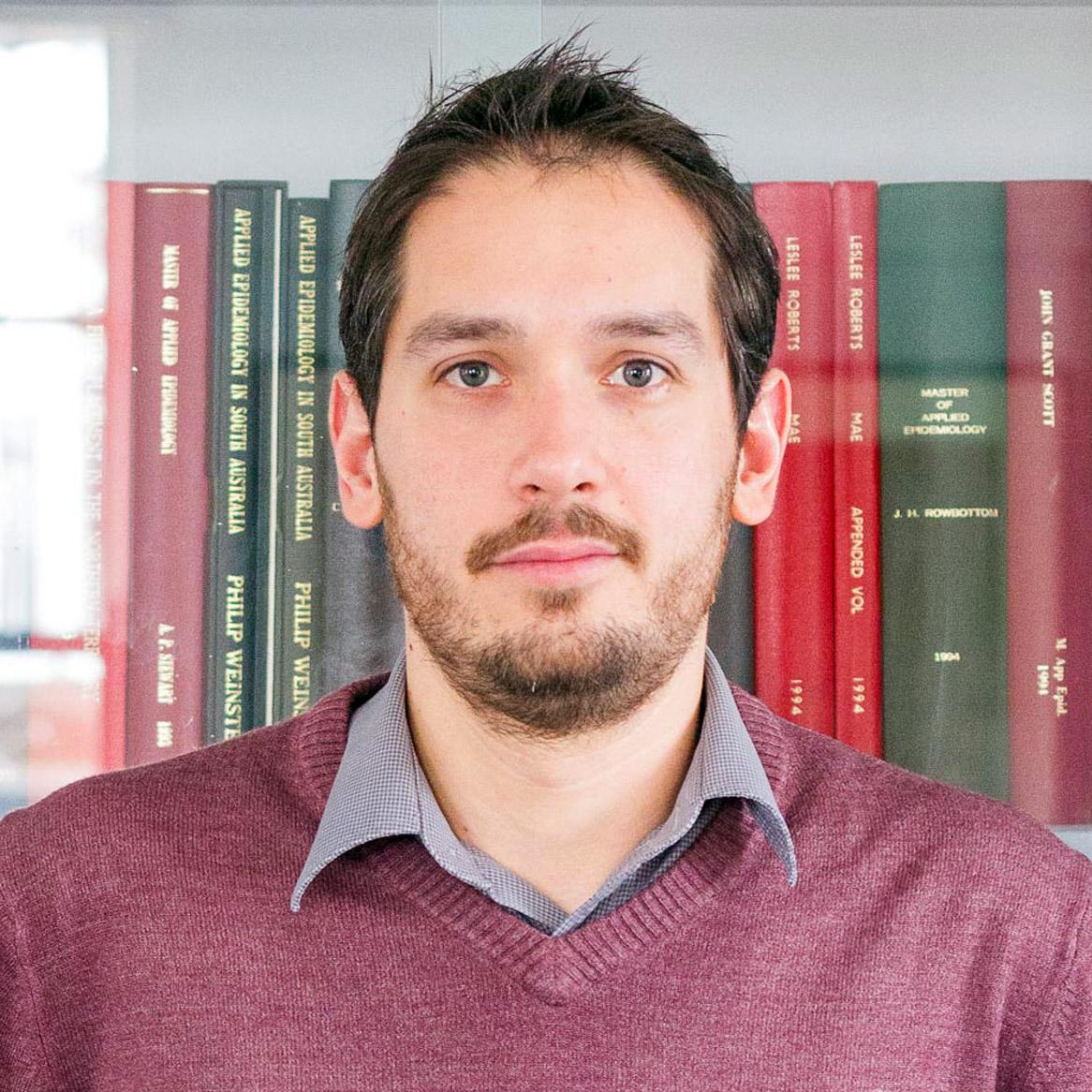Saving megafauna from bacteria
Identifying and imaging biofilms that threaten the Naracoorte Caves' fossils
Micro-organism biofilms have been found growing on exposed fossil remains. Opportunities are available for students to undertake cutting-edge laser and optics research to identify these bacteria and help preserve our fossils.

A skeleton of a Marsupial Lion (Thylacoleo carnifex) in the Victoria Fossil Cave, Naracoorte Caves National Park. Image: Karora, Public domain
Preserving megafaunal remains at the Naracoorte Cave system, both in-situ and as part of the South Australian Museum collection, is of extremely high importance to our continuing efforts to both maintain evidence of this part of Australia’s natural history as well as to develop a better understanding of the environmental conditions of megafaunal times.
Since the caves have opened to the public, subtle micro-organism biofilms have been observed growing on exposed fossil remains under LED illumination. These biofilms are believed to pose a long-term threat to the integrity of the fossils.
Attempts at identifying the areas of organic growth, in the form of biofilms, using ultraviolet-induced fluorescence imaging have not been very successful due to the relatively low emission intensity as well as the presence of background fluorescence from the surrounding environment, a well-known issue with UV excitation sources.
An exciting possibility is to utilise an additional part of the optical spectrum for uniquely identifying and visualising bacterial films. Recent developments in the near-infrared (NIR) spectrum, from 900 to 1,700 nm, a rang previously unexplored for fluorescence characterisation, have begun to unveil new information about natural mineral and organic species.
This project, based at the Institute for Photonics and Advanced Sensing (IPAS) at the University of Adelaide and the South Australian Museum, will utilise the cutting-edge laser and optics facilities of the Prescott Environmental Luminescence Laboratory (PELL) to conduct the first exploration of the NIR waveband for organic biofilm identification and imaging on fossils.
The aim is to perform initial studies in the lab, generating laser-induced fluorescence from cultures of bacteria and imaging these using NIR cameras and analysing them through cooled infrared spectrometers. The first step is to discover and characterise the signatures of the specific bacterial biofilms that grow within the caves, and determine the optimal measurement conditions for separating that signature from any signature the fossils themselves may possess. The next step is to attempt an on-site demonstration of a portable imaging system that lets you identify areas of concern, where biofilm growth threatens the integrity of fossils within the Naracoorte Caves.
A successful candidate would be someone with experience in either palaeontology or optics/physics. The cross-disciplinary expertise of the support team with whom you will be working will ensure that you reach the level of expertise required to successfully complete the project. In addition, support and samples from the SA Museum will ensure a wide range of candidate samples and a good understanding of the underlying composition and history of each sample.
This work aims to create a new technique that will assist fossil management and preservation within the Naracoorte Caves by detecting and assisting control of a significant source of deterioration. This is essential to keeping the site open to the public for decades to come without further damage to in situ fossils.
Success in this project will be a globally useful contribution to conservation of specimens both in other cave systems and in museum collections. Help us make this happen!
Join the Institute for Photonics and Advanced Sensing
This project is hosted by IPAS, a global hub of photonics research, creating transformational new approaches to sensing and transdisciplinary problem solvers.

Supervisors
Co-supervisors: Dr Liz Reed | Professor Nigel Spooner
Research area:
Environmental sensing - Prescott Environmental Luminescence Laboratory, IPAS
Recommended honours enrolment:
Honours in Physics or Honours in Molecular and Biomedical Science
